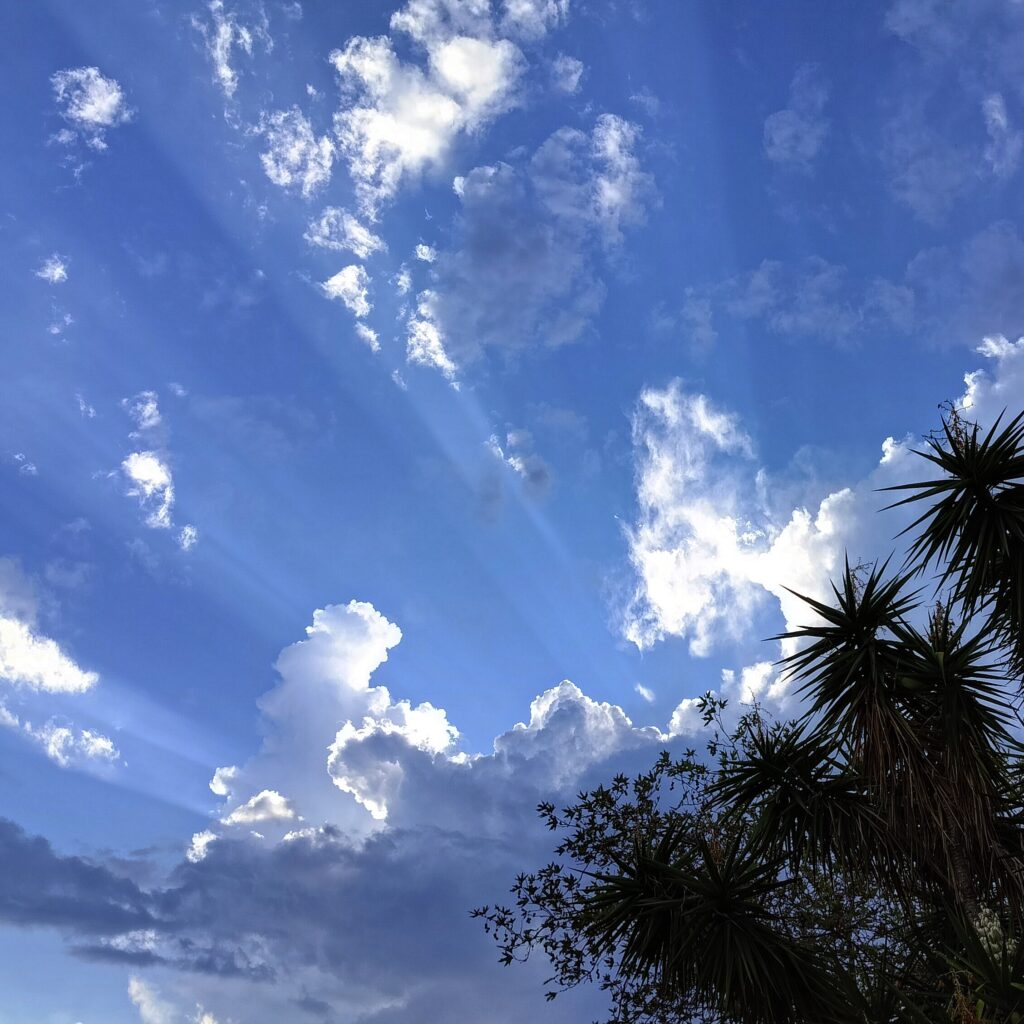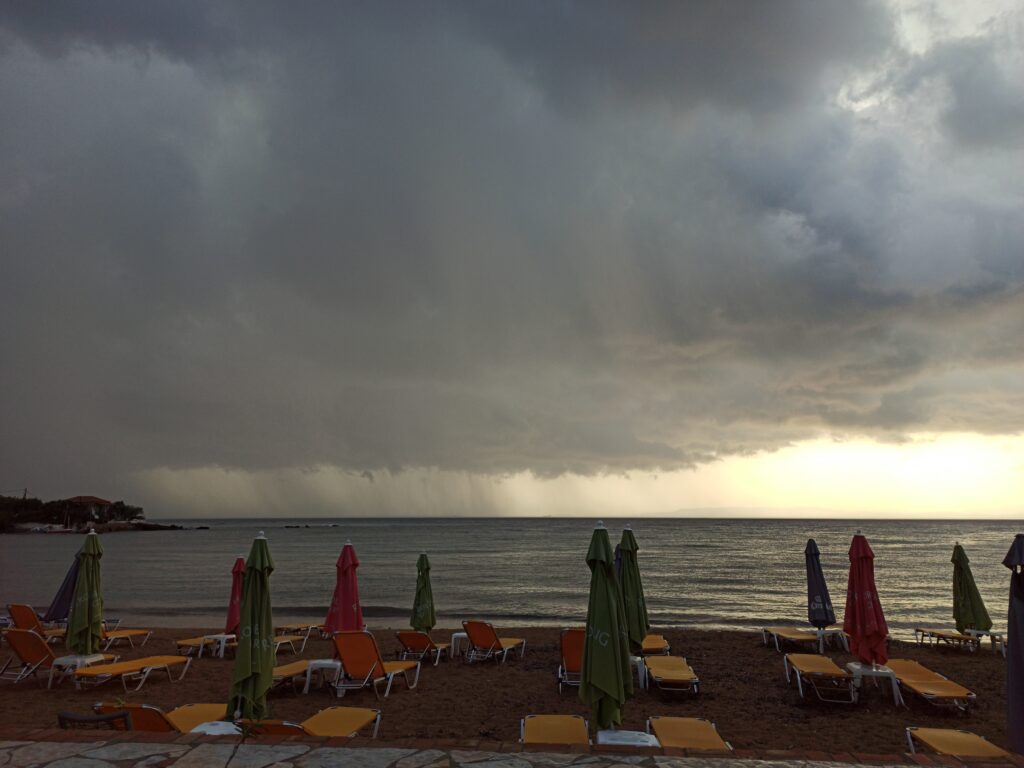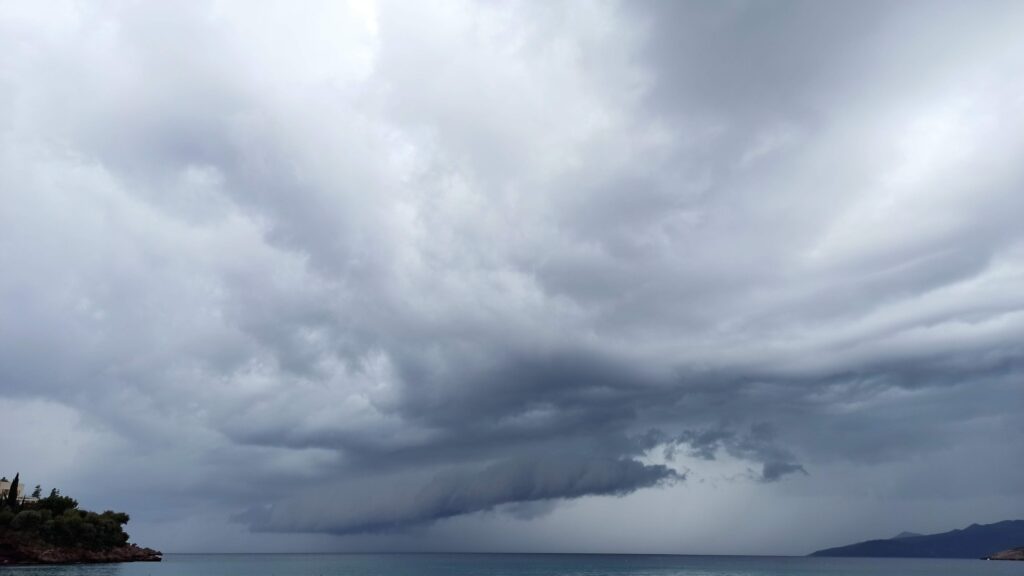The weather in the Mani Peninsula is known for its dramatic changes, especially after the scorching summer months. The region’s geography, particularly the Taygetos mountains and its position along the Mediterranean, significantly shapes these stormy conditions. After the long, dry heat of summer, intense thunderstorms often form, bringing much-needed rain to the land, especially to the region’s prized olive groves.

The Science Behind Mani’s Post-Summer Storms
During the summer, the warm waters of the Mediterranean surrounding the Mani Peninsula absorb heat. As temperatures rise, moisture evaporates from the sea and remains suspended in the atmosphere. When autumn arrives, cooler air currents from the north collide with the warm, moist air, triggering the formation of powerful storms. The Taygetos mountain range further intensifies these storms by forcing the air upwards, leading to heavy rainfall and dramatic lightning displays.
These storms are a spectacle and a vital part of the ecosystem. After months of relentless heat, the rain relieves the land, notably the olive groves, which have withstood the dry summer. The moisture seeps into the soil, nourishing the trees and helping to ensure a strong olive harvest.

The Beauty of Watching Storms in Mani
While these storms can be fierce, they are also breathtaking to observe. The dark clouds rolling over the sea, the cracks of lightning illuminating the sky, and the sound of heavy rain hitting the coastline create a mesmerizing natural performance. For locals and visitors alike, storm watching in the Mani Peninsula is an experience that captivates the senses.
Storms offer a perfect reminder of nature’s cycles. They not only bring much-needed water to the parched earth but also refresh the air and prepare the land for the cooler months ahead.

Why the Storms Matter
Though intense storms may cause temporary disruptions, they are a crucial part of the seasonal rhythm in the Mani Peninsula. The rainfall replenishes the region’s water sources and supports agriculture, mainly olive farming, which is essential to the local economy. In addition, these storms help maintain the lush greenery that makes Mani’s landscape so unique and beautiful.
So, while the weather may seem unpredictable after a long, hot summer, these storms dramatically transition between seasons, balancing the heat with life-giving rain. And for those who appreciate nature’s raw power, the Mani Peninsula weather offers an unforgettable experience, blending beauty and necessity in perfect harmony.

Search
Categories
- Accommodation
- Activities
- Architecture
- Areopoli
- Awards
- Beaches
- Community
- Culture
- Destination Highlights
- Discover
- Entertainment
- Food
- Gerolimenas
- Greek Cuisine
- Guide
- Gythio
- History
- Hotels
- Kardamili
- Kardamyli
- Kotronas
- Living in Mani Greece
- Local Business
- Mani
- Marine Life
- Marmari
- Nature
- News
- Off-the-Beaten-Path
- Stoupa
- Sustainability
- Tradition
- Travelling
- Villas
- Wildlife
